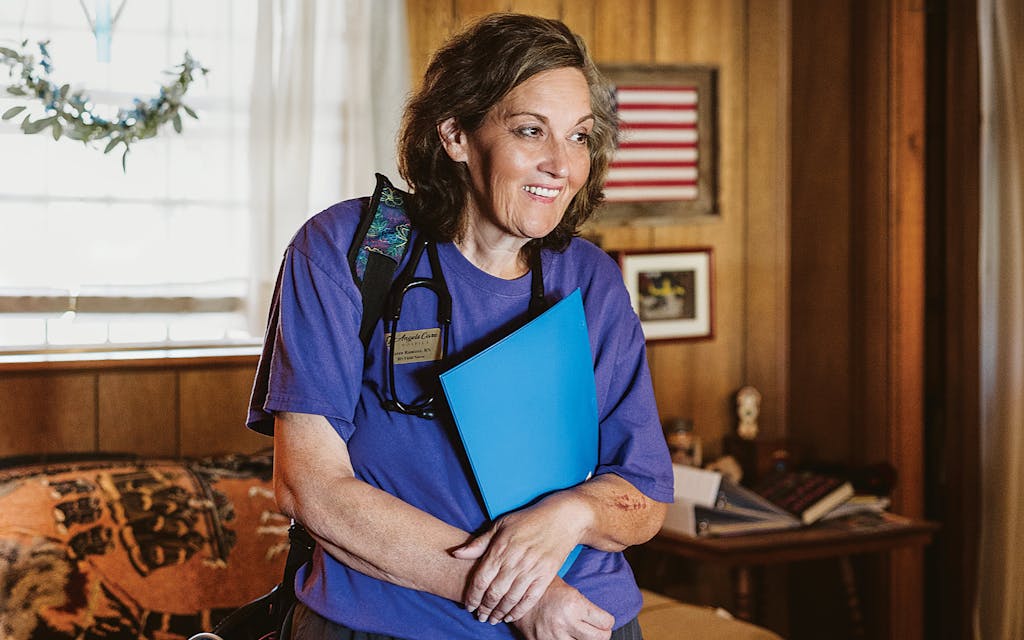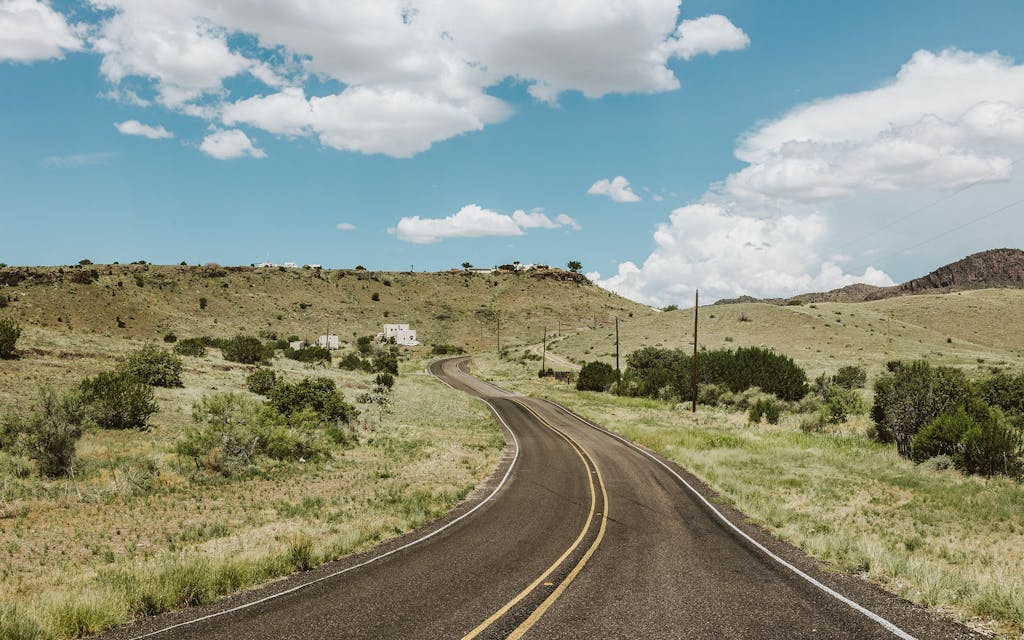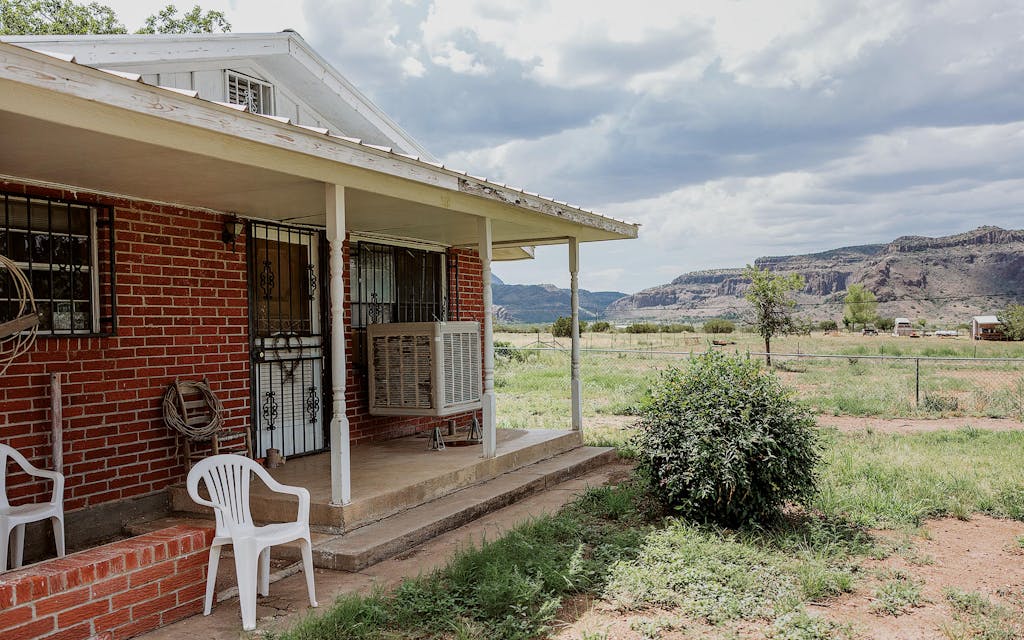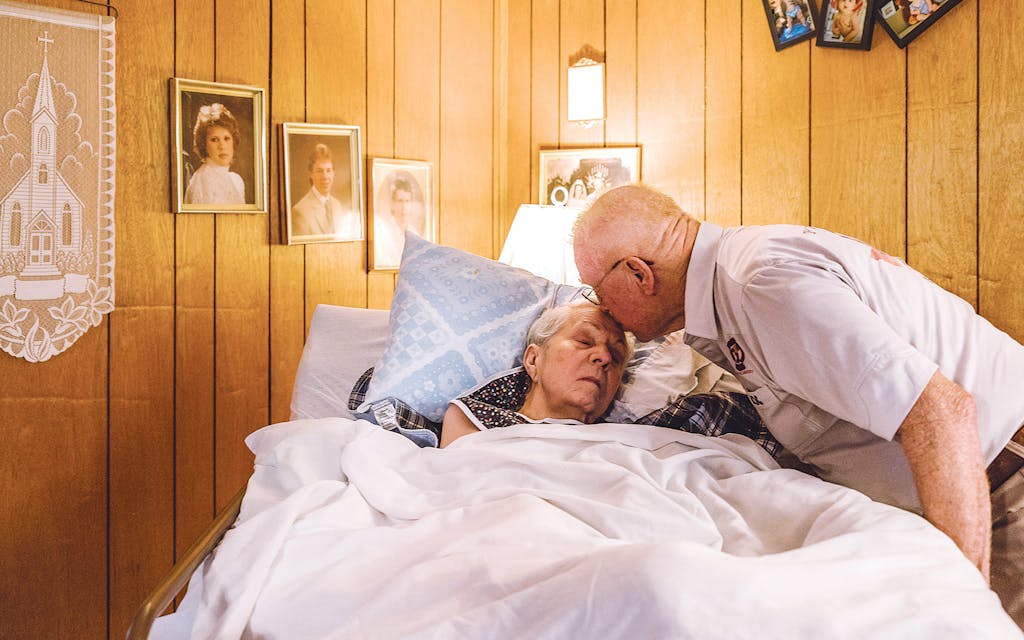If you’ve enjoyed views of the Davis Mountains for most of your life, it seems only right that you should get to spend your final days amid those familiar vistas. But many terminally ill patients in the Big Bend region find themselves shuttled off to nursing facilities in El Paso or Midland or elsewhere—far from everything and everyone they know and lucky to have a window, let alone scenic surroundings.
Comprehensive hospice care, which prioritizes a patient’s comfort at the end of life, hadn’t been available in the region since the nineties, when the service was discontinued because of financial difficulties. Then last year, Angels Care Hospice, a Midland-based provider, noticed the need in Brewster County, where those age 65 or older make up a quarter of the population, compared with just 13 percent statewide. The company hired Karen Ramirez, a 56-year-old registered nurse, to serve Texas’s largest county—a territory bigger than Connecticut—which includes the towns of Alpine, Marathon, and Terlingua.
I first heard about Ramirez last spring, through my friend Sage Keith, whose 66-year-old father, Rick, was dying of pancreatic cancer in Alpine, a community of about six thousand residents with the limited access to health care that is typical throughout much of rural Texas. Like many in his position, Rick had to seek treatment elsewhere—in his case at MD Anderson Cancer Center in Houston, considered the best hospital of its kind in the world but a nine-hour drive away. Those journeys back and forth became more arduous as Rick’s condition worsened. Eventually he was given a choice: pursue a last-ditch treatment option that might extend his life by only a matter of days, or proceed to hospice care.

The family decided it was time to take him home, but that was easier said than done. No ambulance would travel that distance, and Rick was too fragile to withstand the drive sitting in a car seat, so they rigged up their own medical transport. Sage’s fiancé had recently acquired a Ford Excursion SUV for their business as Big Bend river guides, and he fitted the back of the vehicle with sleeping pads and bedding they would normally provide to their clients.
Moments after they arrived with Rick at his house in Alpine, Nurse Ramirez showed up. She had seen to it that a pharmacy filled his prescriptions for pain medications, and she provided the family with supplies, including pads for incontinence and bedsheets with handles that would make it easier to move him. She explained to the Keiths how she would support them through each of several stages of hospice care, which made Sage feel “relieved,” she recalled later.
Noticing Rick struggle to sit up, Ramirez offered the family an old hospital bed that she had in her personal storage unit. (Angels Care hadn’t yet secured a source of durable medical equipment—such as beds, walkers, and wheelchairs—for its Brewster County patients.) She gave the Keiths her personal phone number and later proved willing to answer calls and texts at odd hours.
Ramirez is a nearly thirty-year resident of Brewster County, and that brought reassuring familiarity. Rick was a retired high school history teacher and cross-country coach, and one of Ramirez’s two daughters and her son knew him through the athletic program. Ramirez addressed him as so many others in town long had—not as “Rick” or “Mr. Keith” but simply as “Coach.”
Months later, after his death, Sage spoke about the significance of bringing her father back to Alpine—“the dignity of being able to die in your own bed and the home you created, surrounded by the family that you built.” That wouldn’t have been possible without the work of Ramirez.
There’s often a stigma or fear attached to any mention of hospice care, likely rooted in an aversion among many Americans to discussing the ends of our lives. “We have a youth and health culture, and so we’re not really friends with the idea of death,” said Megan Hebdon, an assistant professor at the University of Texas at Austin School of Nursing whose research subjects include hospice work. “We don’t really see it as something that’s part of the continuum of life.”
Hospice care falls under the umbrella of palliative treatment, which aims to reduce the suffering of patients with serious illnesses by managing their symptoms. When a disease reaches an advanced, seemingly irreversible stage, some patients—often on the advice of their families and health-care providers—decide to transition to hospice.
“In terminal cancer treatment, sometimes the treatment is causing so many side effects that the patient isn’t really living,” Hebdon explained. “When they’re at the point where they are not living well or living the way they would want to spend their time, that’s when moving to hospice care may be a better choice to help them get comfortable and help them have experiences they value before the end of life.” Most health insurance plans cover this care, provided the patient meets certain criteria. For those with Medicare or Medicaid, a doctor must certify that a patient is terminally ill, with a life expectancy of six months or less. The number of Americans enrolled in hospice through Medicare has risen in recent years, increasing by 20 percent from 2016 to 2020.

In hospice care, all treatments meant to slow or cure terminal diseases cease, but many people mistakenly believe that means the death of the patient is imminent. “They often see it as giving up rather than as something that can really improve the quality of life for everyone,” Hebdon said. In many cases, she added, patients who move to hospice care end up doing well for months or even years. She’s even seen some “graduate,” meaning that their symptoms and functioning improve dramatically, and they leave hospice. The average patient is in hospice care for ninety days.
Hospice teams, including the one on which Ramirez serves, often include social workers and chaplains who help the patient and family with the ramifications of death. Ramirez is hardly immune to these effects. When I met her in August at Penny’s Diner, near the edge of Alpine, she choked up as she told me that one of her patients had just passed away. “Yesterday hurt,” she said. “He was a good man.”
Ramirez has heart disease and also has trouble eating because of complications related to a gastric-sleeve surgery. At Penny’s she ordered an iced tea and nothing else. A couple of years ago she broke her hip, and she now sometimes walks with a limp. She said it was because of her own health issues that she shifted the way she thinks about caring for her patients. “I was in denial for a long time with my health problems,” she said. “Through accepting my own problems, I’ve had to learn that other people have to accept theirs.”
Originally from Nova Scotia, on the Atlantic coast of Canada, Ramirez decided to move to Texas after graduating from nursing school. At the time many Canadian nurses were being recruited to Florida, but she’d already seen that state and wanted to experience something new. She was 26, and it was November. “I chose Texas only because I was in the snow,” she said. She landed in Alpine with every intention of eventually returning north. Instead she met her husband, an Alpine native, and raised their three children. At times her drawl sounds entirely Texan. Other times, the elongation of her vowels on words such as “about” reveal her far more northern roots.
Ramirez spent the bulk of her thirty-year career on what some might consider the opposite end of the nursing spectrum. She worked in the maternity ward at Alpine’s Big Bend Regional Medical Center, helping to usher new life into the world. Ramirez finds end-of-life care just as rewarding, if not more so. “Delivering all those babies, it’s a happy time,” she said. “But I actually see more love in hospice than I did with the babies.”
In 2018 her mother was diagnosed with lung cancer and lymphoma, so Ramirez returned to Canada to live with her for two years. There she witnessed the value of her mother’s palliative-care nurse, which inspired her to change her specialty. “The relationship is just a little bit closer,” Ramirez said of hospice care. “You have the intimacy of being invited into someone’s home.”

Before starting her job in Brewster County, Ramirez received a week of training at Angels Care’s Midland office, where she shadowed other hospice workers. Like a lot of nursing, it’s a physically demanding job. Patients often have to be lifted and assisted with bathing and bathroom visits. Ramirez’s health issues don’t make it any easier, especially considering that she’s the sole full-time provider in a 6,200-square-mile county. On a typical day, she’ll drive anywhere from 25 to 150 miles to visit four to six patients. She sees each one at least twice a week, for visits that range from thirty minutes to two hours. Until recently she was on call 24/7, but she now shares the responsibility with another member of her staff. She relies on the help of a nurse’s aide as well as a licensed vocational nurse, who alternate seeing patients between Ramirez’s visits.
Apart from driving long distances, one of the biggest challenges she has faced—and one unique to a rural area such as Brewster County—is acquiring supplies. In some cases, Angels Care can ship the things she needs. In more urgent situations, she’s had to solicit the help of her two daughters, who live in Odessa, to shuttle supplies from the Midland office. She meets them at the halfway point, in Coyanosa, eighty miles from Alpine. One recent improvement came in August, when Angels Care secured a contract with an Alpine company to provide durable medical equipment so that Ramirez doesn’t have to fish a hospital bed out of storage for any other clients.
We left the diner to meet her next patients. Her SUV doubles as an
office and carries paraphernalia for both her job as nurse and her role as grandmother. In the back seat was a booster seat and, on the floor, an oxygen tank. We drove along a winding road outside town that offered stunning views, a reminder of why some people choose to live in this isolated portion of Texas. Ramirez told me that the patients we were going to see, a couple, had been in her care since she started as a hospice nurse, in December 2022. “This isn’t a story of dying,” she said, pulling up to their ranch-style home. “It’s a love story.”

Ernest Reesing, who goes by “Doc,” met his wife, Jo, at a dance in Navasota, seventy miles northwest of Houston, on the night after John F. Kennedy was assassinated, in 1963. The band was playing a country and western tune. “I asked her to dance,” he said. “She never would let me go after that.”
The 88-year-old sat in a leather armchair in the living room of the Alpine house that he and his wife have occupied for 47 years. Faded family portraits cluttered the walls. He wore a polo shirt with the Texas A&M logo emblazoned beneath the collar and “Doc” embroidered on the pocket. He long worked as a professor of veterinary technology at Sul Ross State University, in Alpine, and served as chief of the city’s volunteer fire department.
In an adjacent bedroom, within sight of his chair, his wife, Jo, 83 years old with late-stage Alzheimer’s, reclined in a hospital bed, only her head of cropped white hair visible above her bedsheets. Their daughter, Susan Carroll, who is 58, had moved in more than a year earlier to help her parents. She told me that Ramirez has been a blessing.
Doc had been Jo’s primary caretaker until last year, when he was diagnosed with congestive heart failure. His organ operates at only 20 percent of its capacity. He moves with difficulty, using a walker that Ramirez refers to as his “speed buggy.” Doc, too, is now a hospice patient under her care. She took his blood pressure, checked his oxygen level with a pulse oximeter, and examined his ankles for signs of swelling.
Ramirez regularly uses a measuring tape to determine weight gain or loss, which is easier than getting patients with limited or no mobility to step onto a scale. An increase in body mass might indicate fluid retention and necessitate a change in medication, while a patient getting thinner could prompt her to recommend more daily meals. She also helps patients manage their medications, often distributing pills into organizers for easy access. She adjusts the positions of her immobile patients regularly to prevent bedsores.

Ramirez went into the bedroom to check on Jo, who looked diminutive, almost swallowed by her bed. Jo’s legs were tucked up close to her belly, the right one wrapped in a wound dressing to stave off infection. Her femur had broken. Fractures are common among older adults, especially women, whose bones have turned brittle. Jo’s break had penetrated her skin, but given her condition, there was no way to reset it.
Occasionally, Jo would open her eyes, including when Doc kissed her forehead. “You’re still mein schatzi,” he said, using words he’d learned as a GI in Germany during the fifties: You’re still my sweetheart. “She’s waiting for him,” Carroll whispered to Ramirez, who nodded.
With his speed buggy, Doc walked us out. He struggled to stay upright, steadying himself against the car in the driveway to watch until we’d left. In her line of work, Ramirez gets asked the question a lot: How much time do I have left? “I’ve learned to say, ‘I’m here for you as long as we need,’ ” she said. “ ‘We don’t have a timeline.’ ”
This article originally appeared in the November 2023 issue of Texas Monthly with the headline “To Live and Die in Far West Texas.” Subscribe today.









